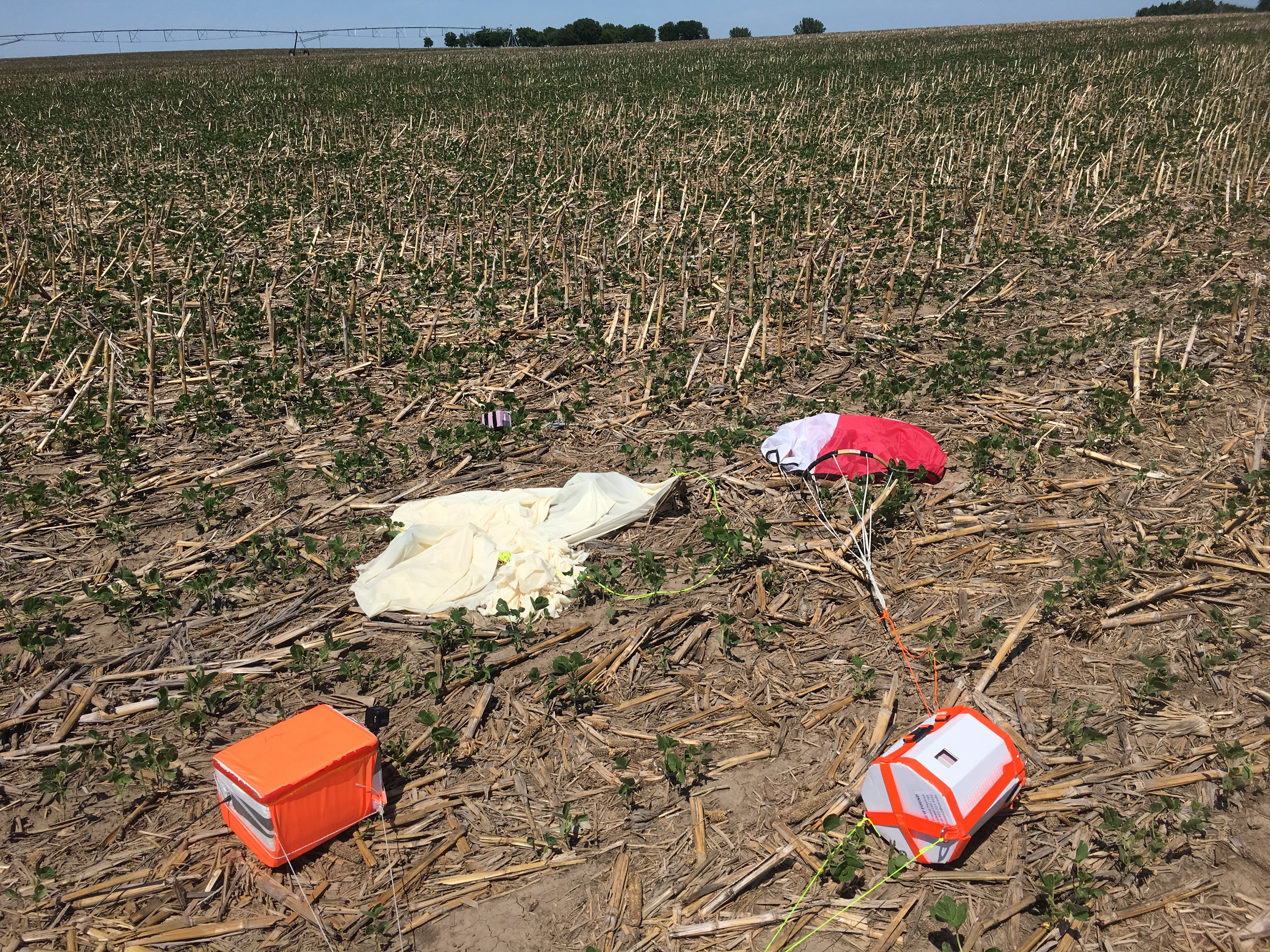Our big dry run for the eclipse balloon launch was held on Tuesday, June 20, 2017. All of the ballooning teams were to perform a test of the equipment, preferably a balloon flight, but a tethered flight or bench test if conditions were not favorable for a full flight. We are one of the lucky teams close to where we will actually be launching that we decided to travel to the Stuhr Museum in Grand Island for our practice.
We plan to launch three balloons during actual eclipse, but different circumstances made it so the students who will have experiments on the second balloon were not able to attend.
Some of those circumstances had to do with a huge storm we had on Friday night. We were at the position of the little blue pin.

This is what it looked like when we tried to drive home. We had some ferocious winds and branches and trees were down all over the city.

Our power went out for about a day, but there were two confirmed tornadoes that touched down in nearby Bellevue and some of those homes are still without power five days later. The clean up effort is still ongoing.
So, we decided to postpone the testing of the student experiment payload balloon and that is good because it allowed us to focus on the NASA balloon for this flight.
Omaha Public Schools (OPS) has a successful ballooning program and Chris Schaben will be leading their experienced launch team to help release our balloons one after another on time for the eclipse. Chris was able to help with the dry run and he brought his family including the cutest little balloon handlers. We were able to launch a second balloon with the OPS equipment to practice the timing of filling two balloons one after the other.

We had our gas provider deliver the helium cylinders to the Stuhr the day before our dry run. While we were preparing, a representative from the gas company stopped by and exchanged a few of the cylinders. Evidently, someone noticed that they accidentally gave us a few nitrogen canisters instead of helium. They were the same color and have the same threads and were stored next to each other. We would have been really puzzled if we filled the balloon and it did not go up. So, we are glad they noticed and we will have to check to make sure we have the right gas on the day of the eclipse.
We set up the canopy and the base station with the generator. I was able to get the tracking and the streaming video to work while it was on the ground. The Stuhr Museum will have a company provide dedicated Internet access for us for the eclipse, but it was not installed yet, so we were using cellular service. We tried a Hotspot on our phones (AT&T) and a Jet Pack (Verizon) and the data was too spotty to perform adequately. The tracking kept getting an error saying it could not reach the Iridium server and disabled the program. I was able to stream the view from the video camera up to a few thousand feet, but then lost the stream and was not able to get it back. We are hoping to have much better results with a strong Internet connection.


We had several photographers and reporters taking photos and interviews in preparation for the eclipse coverage in relation to the big NASA Eclipse press conference on June 21st.


This was the first time we flew the cut down system and the NASA payloads. I was happy with how well the Iridium GPS performed. It updated on the website about twice a minute. The APRS worked the whole time too. Once we had the coordinates where it landed, we were on our way to recover. It landed near Ong, Nebraska in a plowed field about 500 ft. from the road.

Our SPOT GPS quit transmitting about 10 minutes after launch and did not start transmitting again until about 10 minutes after we recovered it. That is odd and I’m not sure why that happened.
We made a little ledge of Styrofoam to separate the Iridium payload from the RFD payload and that was damaged on impact. We will have to make a few repairs to our payloads before we fly them again.

We are planning to fly the postponed student experiment this Saturday (6/24/17) and we will want to at least do another flight with really good Internet access and do another test once the museum gets the dedicated Internet access installed at our staging area.
